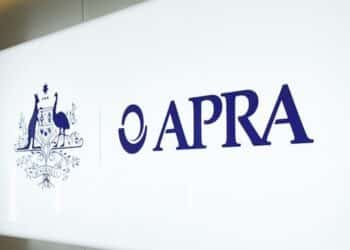Appearing on the latest episode of The ifa Show, Entireti chief executive Neil Younger explained that while the Compensation Scheme of Last Resort (CSLR) is objectively reasonable, the current operational model places the blame of product failures at the feet of advisers.
“I think we’re not the only sector that has a safety net component funded by the industry. From a philosophical perspective, I think most can live with that. I think it’s the construction of this one, and certainly the fact that before it even starts, it’s heavily burdened with Dixon,” Younger said.
“The reality is that Dixon led to client losses. Who pays to fix it? You’ve got the business that created the problem in the first place, well they’re not paying. You’ve got the government when it obviously becomes a social cost.
“You’ve got large institutional groups, well they contributed already significantly to the set-up of this pool, or you’ve got the adviser fraternity and it’s falling to them, and that’s unfair because the very people that have done so much work, hard work to ensure that their businesses are robust, that they meet their obligations, are the ones left carrying the responsibility for something they had no control over.”
He reiterated that, from a philosophical standpoint, there is merit in having the CSLR in place; however, he also said that the funding model needs to be addressed and potentially, the government should take on more of the costs.
“I think the Compensation Scheme of Last Resort, philosophically, maybe that’s OK, but the start has been very poor and maybe there needs to be some revisiting around how that gets cleaned up at the get go and who takes responsibility for that,” Younger said.
“It is interesting, we’ve seen organisations collapse in the past and leave clients holding the bag with some losses in some sense, through no fault of their own, they haven’t necessarily been rescued in somewhat the same way that this cohort has. So, there are some things that are problematic in the establishment of it and I think it’s cloudy in the debate.”
Younger further questioned where the breakdown is occurring that has resulted in the need for the CSLR and, like many others, questioned where professional indemnity (PI) insurance is seemingly falling short of the needs of businesses that go under and their clients.
“The second part of the debate then is, what’s the run rate of this and where’s the focus for it? And the focus in my mind should be on how does a client ultimately find their way all the way through the system to needing to lean on the Compensation Scheme of Last Resort?” he said.
“Where are the things breaking along the way that lead the client to only having that recourse? And focus needs to be on those things, and I think we all speculate as to what those things are likely to be.
“We know that there’ll be deficiency in PI arrangements across the market. If we know that, there should be some emphasis on ensuring that stuff’s fixed to minimise the number of people that need the safety net.”
Younger argued that, if issues are occurring due to a product failure, then product providers should also be on the hook for some of the CSLR, rather than advisers taking on the large majority of the penalties.
“It’s fair and reasonable to have a safety net in the system, and those that participate in the system, it’s not unreasonable that they are part of providing that safety net,” he said.
“If the problem … is created in the product layer, product layer should be there to answer to that. So, I think it’s a fairly logical miss that they’re not there today, and there’s always been that debate as long as I’ve been in advice, and that’s now a few years, there’s always been the last person standing and often that’s the adviser standing behind a problem where a client’s lost money.
“There’s been plenty of instances where it’s been the product itself that’s failed, and of course, we then ask the adviser to account for why they went into a failed product.”
Echoing similar arguments from the advice profession, Younger said that businesses doing the right thing should not be penalised for the actions of others.
“Some businesses just don’t have the capacity to meet their obligations. Well, that’s a problem. Organisations that do shouldn’t have to be funding the ones that don’t, and that needs to be resolved before clients need to tap into that safety net,” he said.
“Now, if all other things are considered, someone finds their way to the safety net. I don’t really have a problem with the fact that collectively, we put our arms around those clients. I just have a problem if we don’t solve the problems that got them there in the first place.”
To hear more from Neil Younger, tune in here.




It’s nice to know that I can blaze away, and earn lot’s of money taking big risks with my clients and then when things turn pair shaped, I can sell off my client base for big dollars and fold the business, with my clients to be compensated by all of the other adviser suckers. This allows me to sleep well at night
Alan Dixon’s company called Mr. Orange Pty Ltd dumped all of its $18.6Mill of shares only 8 days before ASIC commenced civil proceedings against Dixons.
Does ASIC consider this move to be a clear cut case of insider trading & how exactly are they currently pursuing this matter?
Does ASIC consider the fact it reviewed and allowed the Dodgy Dixons flaot PDS to pass inspection whilst they knew full well about the MIS fiasco bubbling away.
How ASIC can let the Dodgy Dixons directors float on the AX to scam on mass a much wider pool of share purchasers is beyond belief.
The whole Dixon’s MIS fiasco and ASIC doing nothing is beyond belief.
in late 2016 Dixons Advisory merged with Evans & Partners. The merger proceeded despite concerns raised in a report to directors of Evans & Partners by KPMG that highlighted the risks of Dixon Advisory’s vertically integrated model and its high reliance on fees generated by the URF.
Meanwhile ASIC done nothing. Multiple times Dixons was called out. Multiple times ASIC done nothing. ASIC should be held responsible for compensation not advisers.
And Alan Dixon is where ??
Didn’t he take something like $17Mill out of the deal before he knew it was going to implode?
Where the hell is ASIC on this?
There is something very concerning here with ASIC & Treasury.
ASIC is lazy and incompetent. It is easier for them to push the clients into the CSLR instead of doing some actual work chasing those who cause the harm to clients and benefited from it.
So a bloke who was boss of a Big Bank Advice business that helped oversee the Big Banks $6 Billions theft of Fees for no service, tells us all how to fix another theft ?
Really interesting ha
There is absolutely no doubt on any level that the CSLR is a blatant case of discrimination against an identified group of whom, when referring to Dixons had no involvement or contributory impact on the client losses or the vertically integrated & conflicted product that was pushed & promoted at every opportunity in the name of greed & profit.
It matters not that the investment environment for US property changed during that period…it is irrelevant.
What matters is the conflicted nature of the advice provided where the licensee had a vested interest & that innocent Advisers across the country are left holding the can for the “ clever “ restructuring of Dixons & E&P in order to avoid penalty.
This cannot be allowed to continue for one minute longer & stopped immediately.
Two things need to happen: –
We need to reform PI Insurance to ensure clients are compensated when they receive poor advice, and
Advisers must be banned from distributing products that are not at arm’s length.
Sadly, both are never going to happen. Way too many vested interests with their noses in the trough.
Would this result in the new and alleged ‘qualified advisers’ being banned?